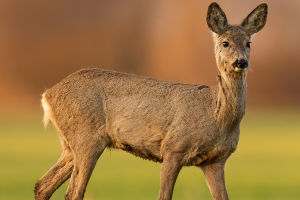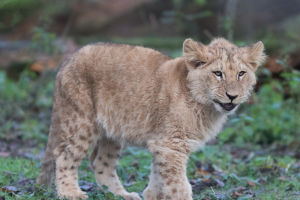The Hoopoe is a fascinating bird that is known for its unique appearance and behavior. This bird can often be seen walking slowly on the ground, searching for food as it goes. When startled or frightened, the Hoopoe will quickly fly up to a nearby branch for safety.
The crest of the plumage is another distinctive feature of the Hoopoe. When resting or foraging on the ground, the crest is open and shaped like a fan.
However, when the Hoopoe is scared or alarmed, it immediately closes its crest on its head. It has a docile temperament and is not overly fearful of humans.
Its chirping is thick and low, and when it sings, the crown of its feathers rises and drops while the throat and neck elongate and bulge.
Moreover, the Hoopoe nods its head while walking, giving it a unique gait.
Despite its somewhat muted appearance, the Hoopoe is a one-of-a-kind bird.
It moves gracefully and quietly on tiptoe through the grass, and its black, brown, and white feathers blend perfectly with its surroundings. Only when it lowers its head from time to time and pokes the ground with its beak in search of food can one detect its presence.
After a satisfying meal, the Hoopoe will look around and then leap up, its wings flapping slowly and rhythmically, like a giant butterfly.
One of the most remarkable features of the Hoopoe is its crown feathers. They are usually folded together behind its head, but when the bird is agitated, excited, or courting, the tufts of feathers on top of its head suddenly open up to form a beautiful crown.
The crown feathers may shake and shimmy, giving the Hoopoe a punk-like appearance. This is why the bird has earned the nickname "flower fan."
During the breeding season, male Hoopoes will fight to protect their territory. They will approach each other with their crests high and beaks stretched as far down as possible. Then they will suddenly bite the tips of each other's beaks and pull in a straight line to maintain a safe distance.
The two birds will then fall off together, beating their wings and pounding each other on the ground until one gives way.
Hoopoes breed from April to June in pairs. Sometimes there is competition between males for females.
The female will watch from the sidelines and eventually choose the winner as her mate. They typically nest in natural cavities at the forest's edge, on the sides of forest roads, or in abandoned woodpecker holes.
The size and diameter of the cavity vary greatly depending on the environment. In areas where tree cavities are scarce, such as farmland at the foot of mountains, they will nest in holes in the walls of abandoned houses, between crevices in cliff walls, or even under piles of dry branches on the ground.
The nests are constructed of plant stems and leaves, sometimes interspersed with plant roots, feathers, and hair.
In conclusion, the Hoopoe is a fascinating bird with unique behavior and appearance. Its crest feathers, punk-like appearance during courtship, and graceful movements make it stand out from other birds.
While not flamboyant, the Hoopoe is a unique and memorable bird that leaves a lasting impression on anyone who sees it.


